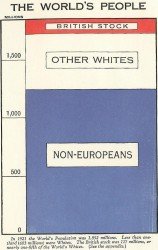Undeniable
Orac at Respectful Insolence has called attention to the attempted arson attack on The Holocaust History Project, and called for other bloggers to link to the THHP home page as a show of solidarity. There’s no proof as yet, but the suspicion is that Holocaust deniers are responsible. Holocaust denial is pseudohistory, a pathological and […]


